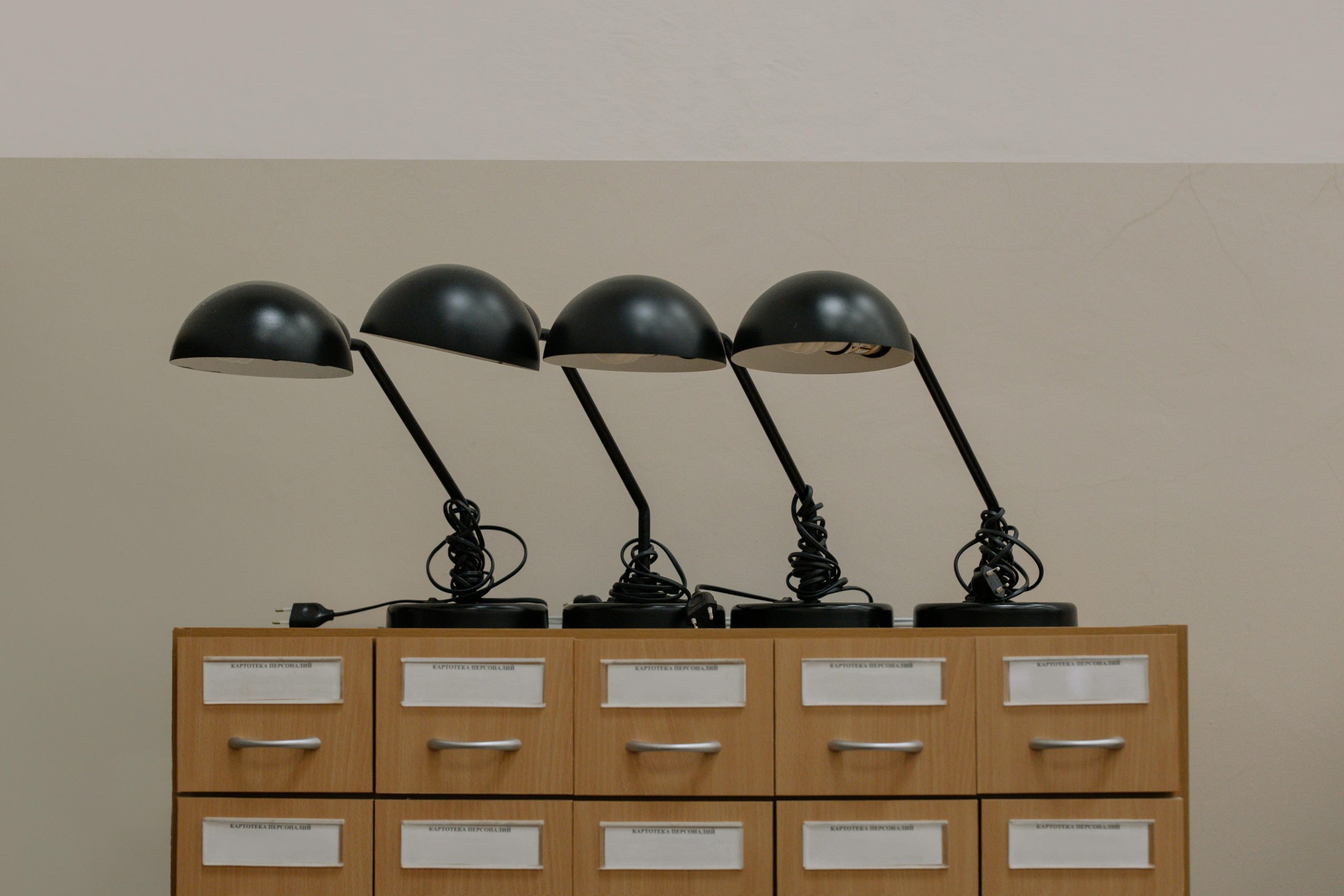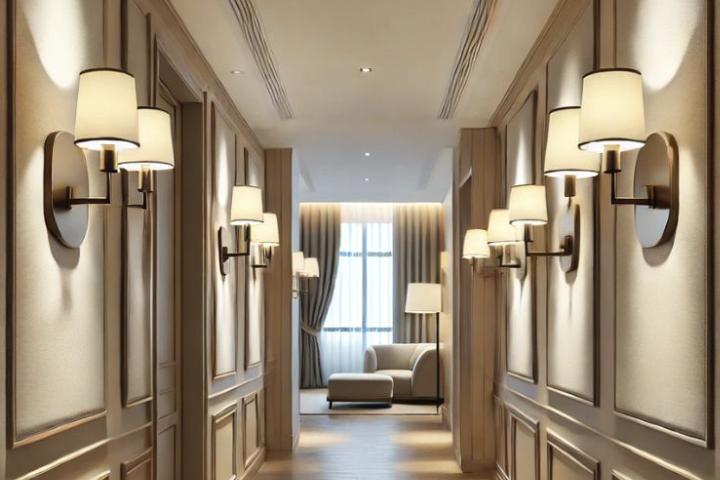
The Timeless Elegance of Traditional Candlestick Table Lamps
The history of candlestick table lamps is a fascinating journey that intertwines the evolution of lighting technology with cultural and artistic movements. Originating in the medieval period, candlestick lamps were primarily utilitarian objects designed to hold candles securely. The earliest forms were simple, often made from wrought iron or wood, and served the dual purpose of providing light and enhancing the ambiance of a room.
As candle-making techniques improved and wax candles became more prevalent, the design of candlestick lamps began to evolve. By the 17th century, ornate designs emerged, reflecting the opulence of the Baroque and Rococo periods. These lamps were often crafted from brass or silver, adorned with intricate engravings and embellishments, showcasing the craftsmanship of the era.
As society progressed into the 18th and 19th centuries, candlestick table lamps became more than mere sources of light; they transformed into symbols of status and sophistication. The Industrial Revolution brought about mass production techniques, allowing for a wider variety of designs to be accessible to the middle class. During this time, the introduction of gas and later electric lighting began to overshadow traditional candlelight.
However, the charm of candlestick lamps persisted, leading to a revival in their popularity as decorative items in homes. The Victorian era saw a resurgence in interest for these lamps, with elaborate designs that often featured stained glass shades and intricate bases, merging functionality with artistry.
The Design and Structure of Traditional Candlestick Table Lamps
Characteristics of Traditional Candlestick Table Lamps
Traditional candlestick table lamps are known for their elegant and often ornate designs, which reflect a rich history of craftsmanship. Typically, these lamps consist of three main components: the base, the stem, and the socket for the candle or bulb. The base is usually wider and heavier to provide stability, preventing the lamp from tipping over easily.
Materials and Design Elements
Materials such as brass, bronze, or even ceramic are commonly used for the base, often featuring decorative elements like engravings or filigree work that enhance their aesthetic appeal. The choice of materials for the stem often complements that of the base, creating a cohesive look. In many traditional designs, the stem is adorned with decorative motifs such as floral patterns or geometric shapes, which can be indicative of the period in which they were made.
Design Variations and Modern Convenience
The stem of a candlestick lamp can vary significantly in height and design. Some feature a slender, elongated form that draws the eye upward, while others may have a more robust appearance. The socket at the top is designed to hold either a candle or an electric bulb, with some lamps featuring a candle holder that can be replaced with a light bulb for modern convenience.
The Versatility of Traditional Candlestick Table Lamps
One of the most appealing aspects of traditional candlestick table lamps is their versatility in various settings. These lamps can seamlessly blend into different interior styles, from classic to contemporary. In traditional settings, they can serve as focal points on side tables or mantels, enhancing the overall decor with their historical charm.
Their elegant silhouettes and intricate details can complement antique furniture pieces or ornate wall decor, creating a cohesive look that speaks to a bygone era. In more modern interiors, traditional candlestick lamps can provide a striking contrast against minimalist designs. Their classic forms can add warmth and character to spaces dominated by sleek lines and neutral palettes.
For instance, placing a brass candlestick lamp on a modern glass coffee table can create an intriguing juxtaposition that draws attention and sparks conversation. Additionally, these lamps can be used in unexpected ways; for example, grouping several smaller candlestick lamps together on a dining table can create an intimate atmosphere during dinner parties or special occasions.
The Role of Traditional Candlestick Table Lamps in Home Decor
Traditional candlestick table lamps play a significant role in home decor by serving both functional and aesthetic purposes. As sources of light, they provide illumination that enhances the ambiance of a room. The soft glow emitted by candles or warm bulbs creates a cozy atmosphere that is particularly inviting in living rooms or bedrooms.
This quality makes them ideal for creating intimate settings where relaxation and conversation can flourish. Beyond their functional role, these lamps also serve as decorative accents that can elevate the overall design scheme of a space. Their unique shapes and intricate details can draw the eye and serve as conversation starters for guests.
For example, a beautifully crafted candlestick lamp placed on an entryway console table can set the tone for the rest of the home, welcoming visitors with its charm. Furthermore, they can be used to highlight specific areas within a room; positioning a lamp on a bookshelf can illuminate favorite reads while adding visual interest to the display.
How to Choose the Right Traditional Candlestick Table Lamp for Your Space
Selecting the right traditional candlestick table lamp involves considering several factors that align with your personal style and the overall decor of your space. First and foremost, it is essential to assess the scale of the lamp in relation to your furniture and room dimensions. A large, ornate lamp may overwhelm a small side table, while a petite lamp might get lost on a grand dining table.
Striking the right balance ensures that the lamp enhances rather than detracts from your decor. Another critical aspect to consider is the material and finish of the lamp. Traditional candlestick lamps come in various materials such as brass, silver, ceramic, or even glass.
Each material brings its own character; for instance, brass offers a warm glow that complements rich wood tones, while ceramic can introduce color and texture into a space. Additionally, consider how the finish—whether polished, matte, or distressed—will interact with other elements in your room. Finally, think about how you intend to use the lamp; if it will primarily serve as ambient lighting for reading or entertaining, ensure it has an appropriate shade or design that diffuses light effectively.
Maintenance and Care for Traditional Candlestick Table Lamps
Cleaning and Dusting
Regular cleaning is crucial to prevent dust accumulation and tarnishing, especially for metal-based lamps. A soft microfiber cloth can be used to gently wipe down surfaces; for brass or silver finishes, specialized metal cleaners may be necessary to restore shine without damaging the surface.
Proper Care for Candle-Based Lamps
It’s important to avoid abrasive materials that could scratch or dull the finish. For lamps that utilize candles, proper care involves ensuring that candle holders are clean and free from wax buildup. Regularly replacing candles before they burn down completely not only maintains safety but also ensures consistent lighting quality.
Safety and Electrical Maintenance
If your lamp has an electrical component, checking wiring for frays or damage is vital for safety reasons. Replacing bulbs as needed will keep your space well-lit while also extending the life of your lamp.
Modern Interpretations of Traditional Candlestick Table Lamps
In recent years, designers have begun reimagining traditional candlestick table lamps through modern interpretations that blend classic elements with contemporary aesthetics. These modern versions often retain the iconic silhouette of traditional candlestick designs but incorporate innovative materials such as acrylic or mixed metals that reflect current design trends. For instance, a lamp featuring a sleek glass base paired with a metallic stem can create an eye-catching focal point while maintaining the essence of traditional craftsmanship.
Additionally, modern interpretations may also play with scale and proportion; oversized candlestick lamps can make bold statements in spacious living areas or entryways while smaller versions can add charm to cozy nooks without overwhelming them. Some contemporary designs even incorporate smart technology, allowing users to control brightness levels or color temperatures through mobile apps or voice commands. This fusion of tradition with modern functionality appeals to those who appreciate classic design but seek convenience in their everyday lives.
The Timeless Appeal of Traditional Candlestick Table Lamps in Interior Design
The enduring allure of traditional candlestick table lamps Kensulighting lies in their ability to transcend fleeting design trends while remaining relevant across various styles and eras. Their classic forms evoke nostalgia and warmth, making them appealing choices for homeowners looking to create inviting spaces filled with character. Whether placed in a rustic farmhouse setting or a sleek urban apartment, these lamps add layers of depth and history that enrich interior environments.
Moreover, their versatility allows them to adapt seamlessly to changing decor styles over time. As homeowners update their spaces with new furnishings or color palettes, traditional candlestick lamps can easily transition alongside these changes without losing their charm. This adaptability ensures that they remain cherished pieces within homes for generations to come, embodying both aesthetic beauty and functional design that resonates with individuals seeking timeless elegance in their living spaces.






